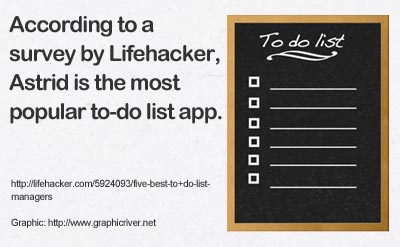By BEN HARGROVE
Procrastinators love to write to-do lists. Writing to-do lists is a lot easier for procrastinators than actually getting things on these lists accomplished. They can set and reset priorities and schedules endlessly. But those endlessly revamped to-do lists somehow never have an item suggesting that they come up with a to-do list that actually works. If you are the kind of person who has trouble getting things done on your to-do list, it’s time to add that item to your list.
There are plenty of decisions involved in setting up a to-do list. It could be on paper, a computer, a smartphone, a tablet or it could be on software that is accessible on multiple devices. That software could be dedicated to-do list software or it could be a spreadsheet or word processing. You could put the highest-priority items first or start with the simplest tasks to get them out of the way.
Ultimately, these decisions are yet another way to procrastinate. What works for you may not work for someone else and vice versa. Just be careful of having your to-do list be so accessible that you are constantly checking it and revising it instead of completing it!
If you are never finishing most of the items on your to-do lists, then you are actually writing might-do lists. So your first step is to come up with a list that you will actually complete.
Keep your initial list manageable
If your first new to-do list includes the dozens of things you have been putting off for weeks, months or even years, you will only get frustrated all over again. Limit your first list to things that need to get done this week. That way, when you complete it, you will start to establish a new habit of finishing your to-do list.
Break big tasks into smaller ones
If you are having your significant other over for dinner, your to-do list probably doesn’t read, “Cook dinner.” You need to plan the menu, get the food and prepare the meal. Breaking your tasks into separate sequential steps enables you to move forward from step to step.
Make sure each step is doable
If your first step is “plan the menu” and you can’t find the Cajun cookbook you were planning to use, you can’t complete the task. If you’ve planned your Cajun menu but you don’t know where to get Andouille sausage, you cannot complete that task. Coming up with a workable to-do list is more than figuring out what to do – it’s figuring out how to do it. If you’ve never made jambalaya before and are not sure what is in it, unless you’re an expert cook, you’d rather follow a recipe than guess how to proceed.
Keep track of completed items
As you check things off, you build confidence that you can get things done. If things are still on the list at the end of the week, you can move them to a new list for the next week. If these items stubbornly cling to your list, you can look at them and see if there’s a pattern. Maybe these items have not been sufficiently broken down into small, doable steps.

